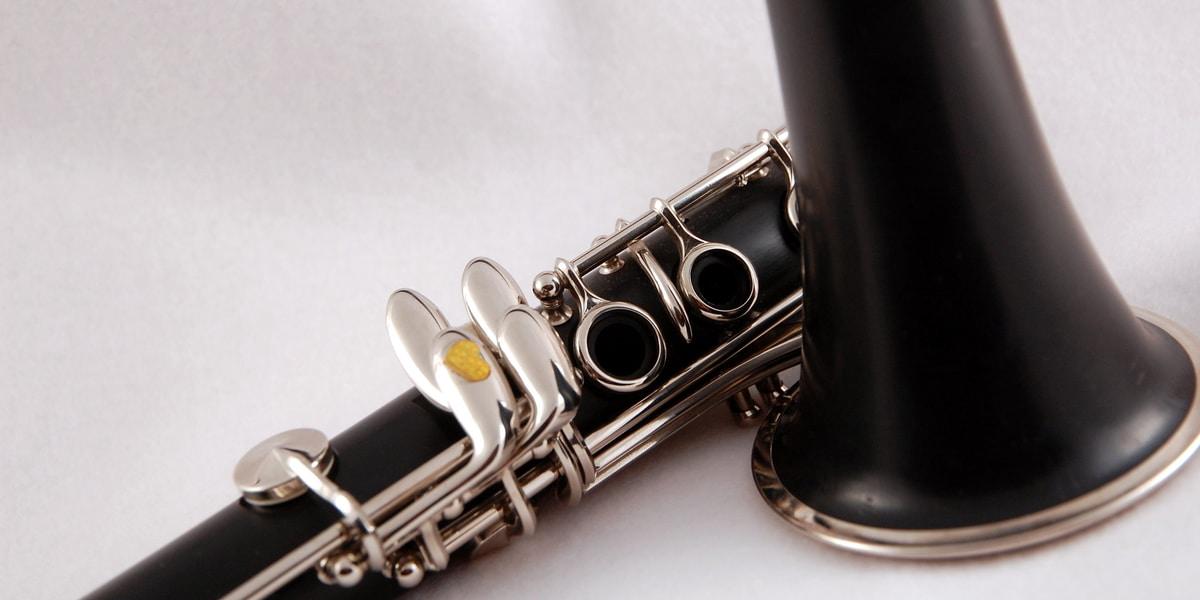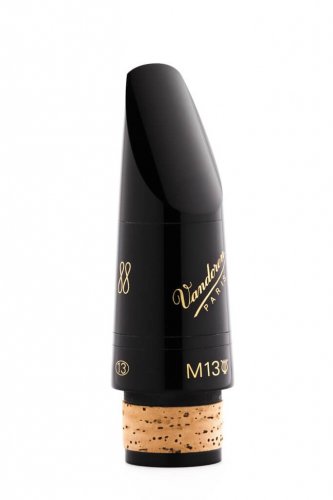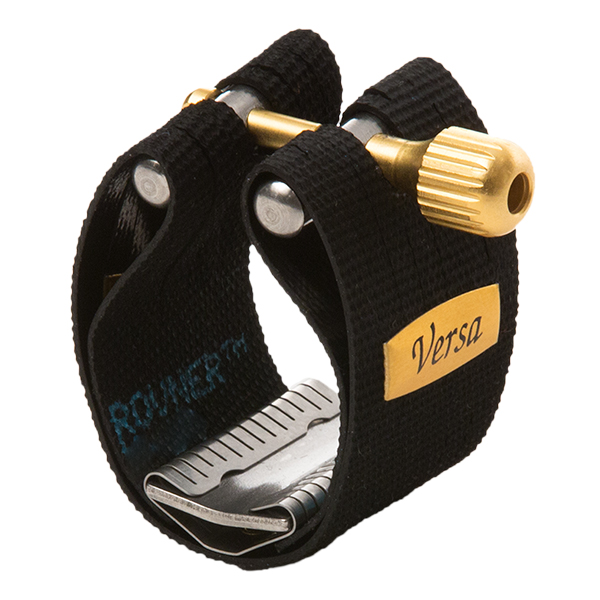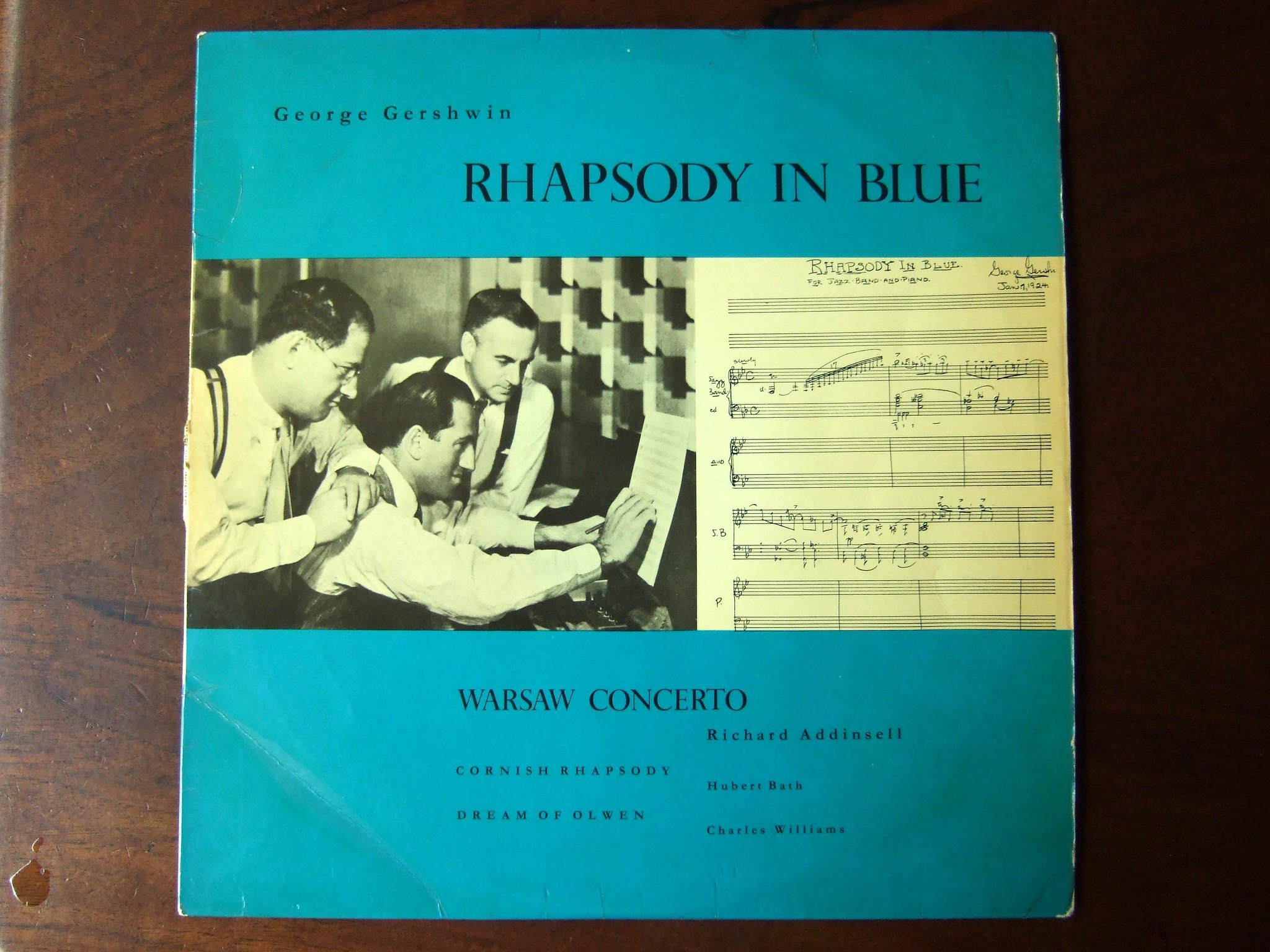As a clarinetist, it's important to know about and understand all of the clarinet parts. There may come a time when the clarinetist will want to upgrade a certain part of the clarinet to improve the sound. It is important to understand the function of that clarinet part. Similarly, a certain clarinet part may break and the clarinetist will need to understand the specific part that broke. It is also important to understand how to keep each clarinet part in good condition to keep the clarinet looking clean and professional. This article will list and describe the clarinet parts of a Bb clarinet.
Mouthpiece
The mouthpiece is the piece at the top of the clarinet. The mouthpiece, along with the ligature, holds the clarinet reed in place. The mouthpiece is a very important part of the clarinet because it forms the sound that will be produced.
The most common clarinet mouthpieces are made out of hard rubber. Some mouthpieces are also made out of glass and wood. Glass mouthpieces are best used for jazz music and outdoor playing because projection is necessary. Wood mouthpieces produce a warm sound but do not have the best projection. Wood mouthpieces are very rare.
Purchasing a new, high-quality mouthpiece is a worthwhile investment for every clarinetist. The mouthpiece plays a huge role in producing a beautiful, rich, full, and in tune sound. Vandoren mouthpieces are very reliable and successful mouthpieces for a variety of clarinets. Each Vandoren mouthpiece has unique qualities to fit each clarinetist's comfort and sound expectations.
The mouthpiece will need to be cleaned due to the build-up of germs and saliva. There are a few different ways to clean the mouthpiece. I use the lemon juice method.
I take half a cup of lemon juice and half a cup of water and mix them both into one container. I wrap the cork of the mouthpiece with an adhesive tape.
Then, I let the mouthpiece soak in the container for ten minutes. Once then ten minutes is up, I scrub any excess saliva stains inside the mouthpiece with a soft toothbrush.
Lastly, I rinse the mouthpiece off in cold water to wash off the excess lemon juice. Other options besides lemon juice are mild soap or a neutral PH cleaning gel.
Vandoren experts advise clarinetists to avoid using hot water, white vinegar, ethyl acetate, or acetone-based dissolvent. All of these substances can cause harm to the mouthpiece. When swabbing the instrument after playing, make sure to take off the mouthpiece first. The swab can get stuck in the mouthpiece.
Barrel
The barrel connects the mouthpiece and the top joint. The barrel shapes and directs the sound through the instrument. The barrel also improves intonation.
The barrel plays a significant role in producing a quality sound. The barrel greatly improves pitch, as well as makes the sound more bright, clear, and full.
The interior of the barrel is called a taper. There are four types of tapers: straight, standard, reverse, and double. A straight taper is the same size on both ends. A standard taper is slightly smaller at the top. A reverse taper is slightly smaller at the bottom. A double taper is where the center of the barrel is smaller than on the ends. The double taper is more uncommon. The taper affects the sound that is being produced.
When choosing a barrel, listen for resonance, focus, and intonation. The barrel should help the sound resonate throughout all three of the registers. If the sound produces overtones and undertones, the sound is very resonant.
Overtones and undertones imply that the sound is very rich and full. The barrel should aid in focusing the sound. The ability to focus the sound is usually easier in the chalumeau and the lower clarion register.
However, it gets trickier to control once the clarinetist ascends higher in the clarion register, and into the altissimo register, the focus becomes more difficult to control.
Because of this, it's important to find a barrel that will make it easier for the clarinetist to control the focus of the sound. The barrel plays a huge role in clarinet intonation. The barrel should help make intonation more accurate.
It is common for the clarinet to be flat in the lower registers and sharp in the higher registers. The barrel acts as a mediator, correcting intonation problems in each register.
The barrel should be swabbed out after every time the clarinet is played. Since the barrel is close to the mouthpiece, a lot of condensation will build up in the barrel.
Barrel Rings
Barrel rings are the thin strips of metal around the diameter of the barrel. The barrel rings constrict the ends of the barrel. This prevents the barrel from splitting into two pieces due to the pressure of the tenon corks.
Tenon corks inside the barrel release extreme outward force that is strong enough to split the barrel in half if the barrel rings are loose or missing.
Top Joint
The top joint of the clarinet is the top half of the clarinet's body. The left hand will play all on all of the tone holes on the top joint. The top and bottom joints should be swabbed out after each time the clarinet is played.
Condensation will get stuck underneath the keys. If not cleaned out properly, mold will start to grow in the tone holes and underneath the keypads.
Register Key
The register key is located on the top joint. The register key is paddle-shaped. When the register key is depressed, the pitches are raised to an octave higher.
Bottom Joint
The bottom joint of the clarinet is the bottom half of the clarinet's body. The right hand will play on all of the tone holes and keys on the bottom joint.
Bridge Key
The bridge key is a mechanism that connects the top joint and the bottom joint. The bridge key must be aligned properly to have the instrument play properly. The bridge key is very fragile, so be sure to assemble the clarinet very carefully.
Bell
The bell of the clarinet is the very bottom piece of the clarinet. The bell is responsible for shaping the sound and tone of the notes with the right hand depressed in each register. Bells can come in different materials and shapes to produce different colors of sound.
Cork Tenons
Every part of the clarinet is held together by cork tenons. The cork tenons ensure that each part is fastened tightly together so there are no air leaks. Cork tenons react quickly to temperature and humidity changes. If the cork makes it difficult to attach the parts, the cork may be dried out.
Apply a small amount of cork grease to the cork. Cork grease gives the cork moisture and will make assembling the clarinet much easier. It is normal for corks to wear out over time. If the cork begins to wear out or fall off, take it to a music store with a specialist who can replace the corks.
Keys
The keys on the clarinet change the pitch when opened and closed. The keys must be completely covered by the fingers to produce the correct sound.
A good way to check if your fingers are covering the keys all the way is to press all of your fingers down on the tone holes. Then, lift them off of the keys and look at your finger pads. If there are complete circles on the pads of your fingers, you are covering the keys completely. For younger students, I call this the "donut check".
As clarinetists advance, they develop muscle memory skills for where each key is on the clarinet. Beginner clarinetists will struggle with playing fast and technical passages or pieces because their muscle memory skills are not developed yet.
The clarinet keys are small and fragile. When assembling and handling the clarinet, the clarinetist must be careful to not bend or break the keys.
Key Pads
Some keys have pads that cover the tone hones. These keypads are made out of leather, cork, or synthetic material. After a certain period, the pads will fall off due to wear-and-tear. When the pads do fall off, I recommend taking it to a music store with a specialist who can replace the pads.
Reeds
The reed is the small, thin piece of wood that attaches to the mouthpiece. Reeds are made out of Arundo Donax, also known as cane that grows in damp soil. With the correct embouchure and amount of air pressure, the reed will vibrate to produce a sound. Reeds have a wide range of strengths/levels of resistance to fit each player's preferences. Clarinet reeds are very fragile items. It is important to understand the basics of clarinet reeds. For clarinet reed brands, I highly recommend Vandoren clarinet reeds. The Vandoren company has a variety of clarinet reeds that will meet a broad spectrum of preferences for clarinetists.
Reeds can also be made out of plastic. Plastic reeds are best used for marching band and jazz band. Plastic reeds are more sturdy and will last longer because they absorb less water. However, plastic reeds do not produce the best sound and tone.
To keep the reeds in good condition, I recommend purchasing a good quality clarinet reed case that allows the reed to lay on a flat surface and obtain enough moisture so they don't dry out.
Ligatures
A ligature is an accessory that holds the reed in place on the mouthpiece. The ligature also helps in producing a quality sound, as long as it's paired with a compatible reed and mouthpiece.
The main musical difference between ligatures is how they respond to the blowing pressure and the tone color they produce. Different materials will vibrate differently to produce unique responses and tone colors.
The ligatures that have worked wonders for me throughout my clarinet journey are the Vandoren ligature and Rovner clarinet ligature. Both ligatures have helped my sound improve greatly over time. Both companies have a variety of ligatures that offer unique qualities to fit the clarinetist's preferences. Both companies offer quality ligatures at an inexpensive price.
Closing Thoughts
Now you are familiar with the construction of the Bb clarinet and how all of the parts work together. Overall, it is important to keep all of the clarinet parts in good condition. Always swab out the clarinet after every time it is played and wash the mouthpiece regularly. Correct maintenance will keep the clarinet fresh and professional-looking.






